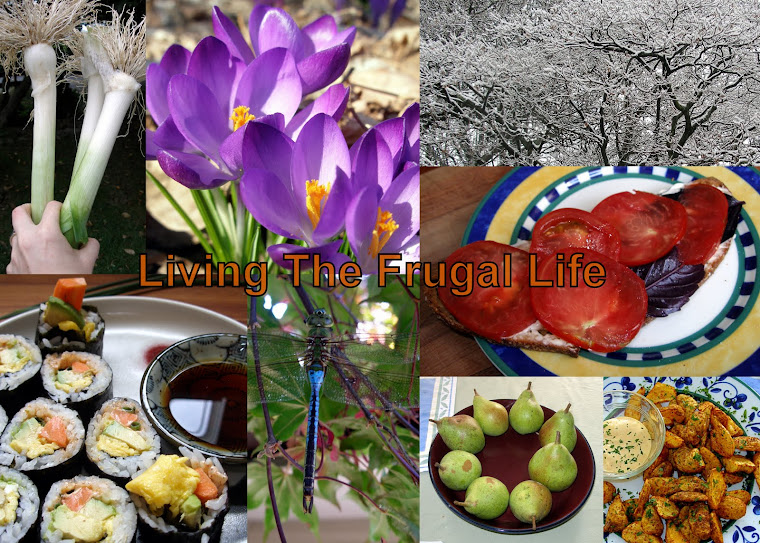So I've been edging closer to lacto-fermentation as a preservation method. There are still some nice looking cabbages out there in my garden. And though significant work has been done on turning a corner of our basement into a root cellar (I know, I haven't posted about this before), we haven't had any properly frigid weather to bring it down to a good temperature, and truth be told it still needs work. The thing that's kept me at arm's length from lacto-fermented products is that I don't like pickles or briny-tasting things. I can't stand olives or capers, and have never understood the appeal of pickled cukes. I've revisited these particular disliked foods and tried to have an open mind, and just found that I really genuinely dislike these things. That said, I have enjoyed kim chi in the past, and I love pickled ginger. So it seems to me that there's some room for optimism that I can make this method of preservation work for us.
Why would I even contemplate trying to work around firmly entrenched food aversions of mine? Well, there are some pretty impressive upsides to lacto-fermentation. For one thing, it's just about the lowest energy-input form of food preservation. You don't need to heat or significantly chill the food being preserved; a cool room will suffice. Over and above that though, lacto-fermentation is the only form of food preservation that gives you a product with more nutrients than the raw food contains. How does that work? The microorganisms doing the lacto-fermentation partially breakdown the food and in the process make more nutrients available to us than our own digestive systems can manage alone. The icing on the cake is that those microorganisms also create narrow-spectrum antibiotics that protect us from a handful of the most common food borne illness culprits (e. coli, listeria, clostridium). So when you eat lacto-fermented foods, you're protected in multiple ways from dietary related illness.
So here's where the wheels in my brain really started spinning. Say you're a nutcase like me, and you're trying to provide as much of your own food as possible on a fairly limited amount of land. You have two challenges: produce enough calories, and produce enough nutrients. Most garden plants give you nutrients, but not too many calories. In order to provide both nutrients and calories you must allocate garden space to crops that supply these two different needs. Lacto-fermentation shifts the space requirements for these two goals.
Let's say, for simplicity's sake, that you divide your 1000 square foot garden into two equal parts: one devoted to cabbage, and the other devoted to potatoes. Cabbages provide excellent nutrition (as well as fiber, by the way), while potatoes are an excellent calorie crop. Let's also say that you can technically meet your family's nutritional needs for the year with 500 square feet of cabbage. But perhaps 500 square feet of potatoes will only provide 40% of the calories needed to feed your family each year. If you can double the nutrition provided by cabbage through lacto-fermentation, you could sacrifice half the garden space given over to this crop without jeopardizing the nutrient needs of your family. If you give that space over to calorie crops, you could get that much closer to self-sufficiency.
My numbers here are entirely hypothetical. I don't know how exactly how much more nutrition results from lacto-fermentation. It probably varies by the vegetable or fruit that is lacto-fermented. Nor do I know how much space is needed to produce 40% of an adult's caloric needs in potatoes. But what's clear is that lacto-fermentation is an important tool that could allow some garden space to be reallocated to calorie crops without sacrificing all-important nutrition. The implications of this are potentially huge for those producing food on small plots of land. More nutrition from the same space, or the same nutrition from less space. I firmly believe that finding ways of increasing food production on - and food value from - small spaces is going to be critically important to future generations.
I'm going to try really hard to find lacto-fermented foods I enjoy eating. I'll start today with a homegrown head (or two) of cabbage, and will post later on how it goes. I plan to explore this method of food preservation over the next year. An acquaintance of mine fairly rhapsodized about a sauerkraut her mother used to buy from a Jewish market that included fresh cranberries and was seasoned with caraway. That sounds delicious to me! If you have any tried and true recipes for lacto-fermented vegetables (especially cabbage), I'd love it if you'd share them or point to them in the comments. And wish me luck!
Framed
2 years ago













